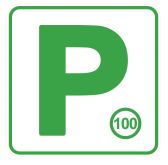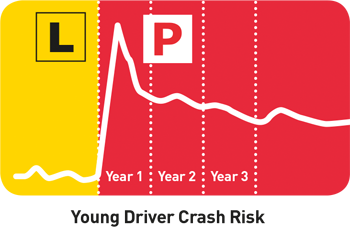2017: a new year. Did you make any resolutions? And are you keeping them? I had the strange experience of a work lunch today where we went around the table and all the teachers told a personal story and/or their New Year’s resolutions. I’ve made a few personal ones, and this post is not about them, but does include a re-statement of purpose for Bijinjapan. This is partly for the reader and partly for me writing. What and how are we doing here?
So, what this blog is not: a how-to guide to Japan. Those are already all over the Internet. If you want to know how to open a bank account, how to get your tax back, how to use a ticket machine… nup.
What this blog IS: Stuff That Happens in Japan. How It Compares With What I Know of Stuff That Happens in Australia. Stuff that Happens in Australia.
E.g. Today’s post: Driving Licences.
Note: This post does not tell you how to convert an overseas licence to a Japanese one.
Most adults I know in Australia have a driver’s licence. Some in Japan don’t: smaller place, more people, more and better public transport. Plus it seems to be quite a hassle getting it.
The process of getting your licence in Australia varies from state to state (and territory to territory). For example, in some states you can get your licence to drive by yourself at 17 years old. In my home state, Victoria, it’s 18.
Most of Australia now has laws, I think, where you have to have a certain number of hours (100ish) before you can do the practical driving test to get your licence to drive alone. When you practice driving you have to record it in a log book and have it signed off by the person who supervised you. If you’re 26 or over, I think the rules may be a bit different.
Driving practice is done with L plates on the car (for ‘learner’), with a supervisor in the car. The supervisor can be anyone with a full licence who’s over 21 – again, there are restrictions depending on the state. It’s not mandatory to have professional driving lessons.
You can get a manual licence or automatic licence. In some states if you only have an automatic licence you have to do a practical assessment to be allowed to drive a manual, but in other states once your probationary period is over (3 years or so) and you get a full licence, you’re automatically allowed to drive a manual. For some or all of the probationary period, depending on your age, you have to put P plates on the car.

Green Ps are for P-platers safely out of their first year. In New South Wales, red Ps are restricted to 90 km/h, whereas green Ps are restricted to 100.
In the last few years they’ve introduced different colours of Ps to show whether you’re in your first year of unsupervised driving or later with slightly more experience. Depending on the state, you can get your Ps when you’re 17 or 18. In my state it was 18, but some people went interstate and got theirs earlier.

Here is why they decided to specify P-platers in their first year of solo driving. Image: Austroads via the South Australian licensing website
In Japan you can get your licence at 18. I believe the driving laws are national – if you know differently, please correct me on this. Apparently there are some differences between prefectures in other laws, but I haven’t been able to find out about driving. The way most people do it, getting your licence in Japan costs an arm and a leg: in Australian money I think it’s in the vicinity of $4,000. This covers a driving course which takes place over a variable period of time, and prepares you for the final paper test you do after successfully completing the course and ‘graduating’ from the school. So if you graduate and pass said paper test, you have a licence. The course includes some classroom work, some supervised driving in a traffic school, and some supervised driving on the street where all the supervising is done by professionals. At least that’s how it worked in the case of my friend I asked the other day. This costly course is basically a no-risk option that can be relatively fast or slow, depending on how much time you have and what days/hours your driving school is open.
There is also a cheaper option for getting a licence from scratch in Japan. I don’t personally know anyone who’s done this, but I found an entertaining article by a guy who did because his overseas licence had expired. It takes at least a week, several separate visits to a driving centre, and the costs add up to at least about AU$250-300. There is also the chance of failing, which increases the cost – it gets more expensive if you have to do it again.
I think this cheaper, riskier option for getting your licence costs about the same as what you could expect it to add up to in Australia. Some people have lessons in Australia, some don’t. Some have just one or two before going for their Ps.
There’s a one-year probationary period for Japanese drivers, during which time they have to display a shoshinsha mark (初心者マーク), a.k.a. a wakaba mark (若葉マーク). Japan also has a mark for aged drivers, the koureisha mark (高齢者マーク), optional from 70-75 and compulsory for drivers aged 75 or over.
You have to renew your Japanese licence every – well, it changes depending on how long you’ve held it. The first licence you get has a green stripe on your name. After about 3 years you have to renew it again and then it goes to blue. After another 3 years with no traffic violations, you renew it and it goes to gold, which is valid for 5 years, woohoo!
My Australian licence is valid for 10 years. You can get a 3-year one if you want, but I don’t think I know anyone who has that. The only disadvantage to having it for 10 years is that you’re stuck with the photo, and sometimes if you want to use it as ID you don’t look the same as the photo when it’s getting near the use-by date.
So there you go. A few ins and outs of getting licences. Coming up in the near future will be a post about attitudes towards the US of A. I will also be looking into, but not publishing, how to stop the spacing going weird when including pictures on the blog. Is it weird for you? Every time I go to the ‘Preview’ page there is a whole lot of space between the text that I didn’t put there.
So, dear reader, until next time.




Yep, 120 minimum practice hours in Victoria… my son is 16. I like the mark for older drivers. I think it would be great to have something similar here. I remember my grandpa driving at 30km an hour, in the gutter 😜 he was 85….
LikeLike
Happy New Year to you too 🙂
Yep, my Nanna had a kind of stroke and crashed into a freeway barrier before she finally made the decision to stop driving! It was pretty scary being in the car with her for a year or two before that. Not sure she would have liked driving with an ‘aged driver’ mark, but it would definitely have been useful for surrounding road users.
LikeLiked by 1 person
Ps. Happy New Year!
LikeLike
Hi BIJ (I abbreviated from Bij in Japan),
Something I think is weird in NSW is limiting the maximum speeds of driver by which license they have.
So L platers can drive max 90km/h, red P platers 90, green P platers 100 so you can’t drive 110 until you have your full license.
I don’t know if they think it helps safety but in my experience it makes it much harder to merge lanes on freeways and you have to overtake P platers all the time because of their speed restrictions.
LikeLike
Hi Liz hers. Yeah, that’s kind of weird, isn’t it? A thing that’s weird here in terms of speed limits is that even toll roads are usually limited to 80km/h, but the expectation is that everyone will drive at 100… and because everyone drives at 100, the other day on TV they were talking about changing the limits to 100. One of the main arguments against seemed to be what you’re saying – but in this case, they were saying, well, some trucks are limited to 80 (probably because that’s the legal limit?) but if the limit is 100, some drivers will be going at 120, so that 40km/h margin would be kind of dangerous.
Why not raise the trucks’ limit to 100? Isn’t that what trucks are limited to in Australia? Are these trucks different?
LikeLike